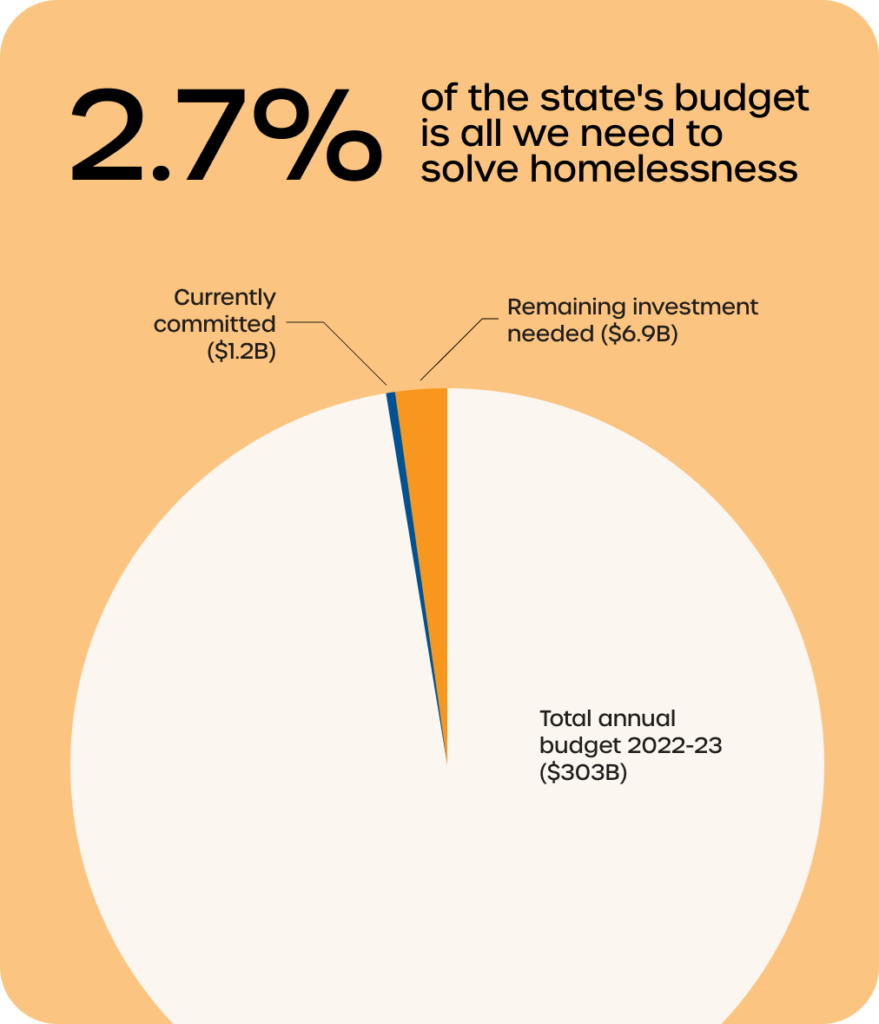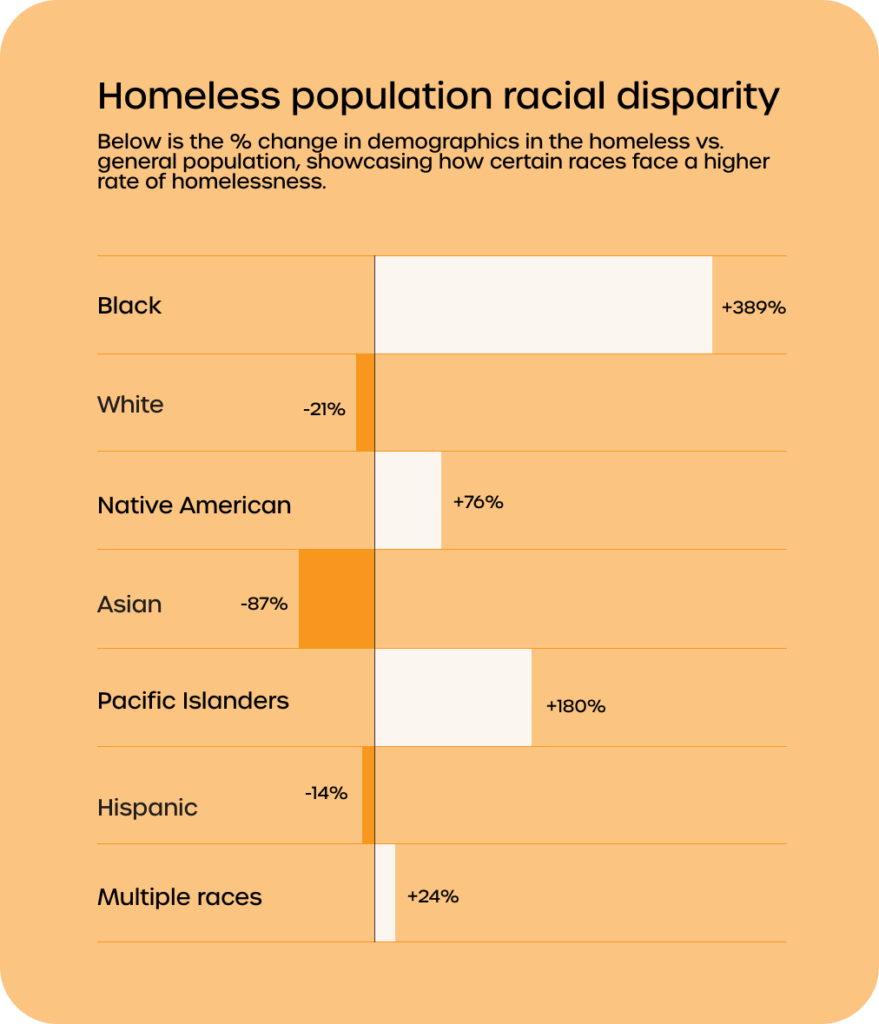$8.1 billion every year. That's how we solve homelessness.
The state and federal governments are projected to commit an average of $1.2 billion toward affordable and supportive housing annually. We’re providing the data legislators need to close the $6.9 billion gap between the housing and services we have and the housing and services we need. Help get this report in front of our leaders.
California has invested record amounts of funding in homelessness in recent years, but never with a clear understanding of how much is needed or what it is paying for. The California Homeless Housing Needs Assessment answers the question, “What will it take to solve homelessness in California?”
The investment Californians deserve
We crunched the numbers. These are the investments we need in order to connect 225,053 households experiencing homelessness with homes. See our methodology.

112,527
affordable apartments
Cost = $5.7B/year for 12 years
225,053
apartments
Cost = $1.8B/year for 12 years
62,966
Californians with disabilities
Cost = $488M/year for 12 years
32,235
individuals and families
Cost = $630.4M total for 12 years
Total Investment Needed to Solve Homelessness
= $8.1 billion/year on average over 12 years
"Housing should be a human right. It shouldn't be [that], if you can afford it, only then do you deserve a home."
Tanya, Homeless AdvocateContact your legislators
Homelessness is solvable. We just need to create the political will to do it. Take less than a minute to send our pre-written email to share the Needs Assessment with your legislators.
What happens when housing is affordable and accessible
Anthony continues to help others experiencing homelessness through his work at Skid Row Housing Trust. As someone who was formerly homeless, Anthony’s experiences put him in a unique position to help others in or near homelessness.
Vikki is a relentless homeless advocate that believes strongly that having a home is a right that everyone should have. She raises her voice loud and often to help improve the lives of people experiencing homelessness.
Through love, empathy, and hope, Tiffany believes that change is possible if we continue to push forward and do so with respect for all.
Zondre is a Los Angeles resident and dedicated advocate and voice for those currently experiencing homelessness and others trying to avoid it.
It's time for a change
Every successful plan begins with a clear goal.
For years, California has invested money into housing and homelessness without a shared understanding of where the funds should go or how much money to contribute.
We need a specific investment goal and a detailed plan to reach it.
To turn tax dollars into tangible results, we have to ground our investments in reality. That means using a combination of data, research, and input from people with lived expertise to determine a path forward.
That’s what we’ve done with The California Homeless Housing Needs Assessment.
Homelessness at a glance
California is home to 25% of the country’s total homeless population—the most in the nation—because we lack housing which unemployed people and those with extremely low or fixed incomes can afford. Here’s who is most affected.
79%
of extremely low-income California renters are severely housing burdened
“Severely housing burdened” people are those who must spend more than half of their income on rent. In California over 1.1 million people fall into this category.
45%
of people accessing homelessness resources have a disability
Due to employment barriers, medical expenses, and limited welfare support, people with disabilities are at an increased risk of falling into homelessness.
> 26%
increase in Latinos experiencing homelessness across the state
Homelessness among Latinos has increased by 29% in San Diego County, 30% in Los Angeles, 55% in San Francisco, and 87% in Sacramento County.

32%
of people experiencing homelessness in California are Black
Black people make up 6.5% of the state’s population, but are nearly one-third of the unhoused population—a reality driven largely by the state’s history with red lining, housing discrimination, and ongoing disinvestment from Black communities.
2:1
is the ratio of Indigenous people & Native Alaskans experiencing homelessness and the general population
Due to a history of discrimination and displacement, Indigenous people and Native Alaskans are disproportionately affected by California’s housing and homelessness crisis, resulting in higher rates of homelessness in these communities.
"What should we do with this information? We can use it to [effect] change."
Leah, Homeless AdvocatePush for change
California has never had something like The California Homeless Housing Needs Assessment before. Take less than a minute to tell your legislators you endorse this report and want data-driven homelessness solutions.